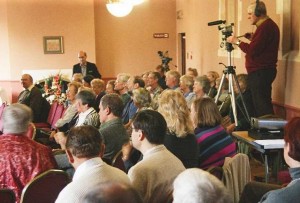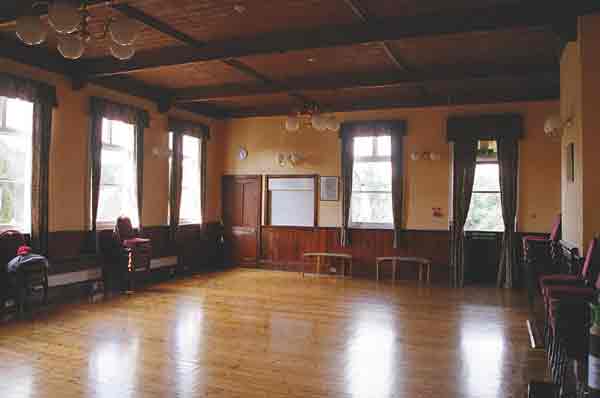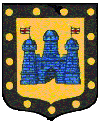Wellcome Great Hall
The Assembly Hall was renamed the Wellcome Great Hall in 1992 in recognition of a substantial donation from The Wellcome Foundation.
The Great Hall has been put to a variety of different , community uses since 1860. Dinners, dances, parties, community fairs, concerts and other entertainments have featured throughout this time. Nowadays it is a popular venue for wedding receptions.

During the Second World War (1939-1945) it was used as a British Restaurant, providing healthy meals at basic prices to local residents. It was also used to dispense orange juice to toddlers and, for one term in the summer of 1949, to provide facilities for a local school.
The Great Hall has a number of interesting features, in particular the tiled fireplace. Portraits of individuals connected with the town and the Town Hall are displayed at one end. The former Minstrels Gallery at one side of the hall cannot yet be brought back into use because there is no safe access. When funds allow, a second floor will be inserted above the foyer to provide a suite of smaller rooms, one of which will lead on to the Gallery. When the foyer was restored in 1990, the roof was raised one storey higher to allow for another floor to be built.
The Clock Room

The room at the West end was originally called the Committee Room. It was renamed the Clock Room when the outside clock was erected in December 1897 (in memory of Thomas Read, who was described in his obituary as ‘the most remarkable man in Berkhamsted’).
The screen between the Clock Room and the Institute Room could be parted but, since the opening was only eight feet wide, the use of both rooms for a single meeting was difficult. The screen’s distinctive pattern can be recognised in a number of photographs still inside the building – for example, the photograph of a contingent of Berkhamsted soldiers about to depart for the Boer War.
When the rooms were restored in 1999 (funded by a substantial grant from the Heritage Lottery Fund and a public appeal), it was decided not to replace the screen and to name the whole room the Clock room. The screen, which was badly damaged, was given to the Scouts in Gossoms End.
In 1886 the Clock Room was leased to the Superintendent Registrar as an office and used for the solemnisation of civil marriages. The lease was renewed in 1997 and in 2000 permission was obtained to use the Clock Room once again for civil marriages.
The Sessions Hall

The Sessions Hall is beyond the kitchen. It was built in 1890 on the eastern edge of the L- shaped site. It was used as a police court and, until 1898, for meetings of the newly formed Berkhamsted Parish Council. In 1938 the Court moved into the newly built Civic Centre across the High Street.
When the Trust started restoring the building in the 1980s the Sessions Hall was the first hall brought back into use. Before this could be done, a new staircase had to be built. The previous access to the Sessions Hall was along a corridor from the top of the twin staircases outside the Assembly Hall. There was a second entrance up a very narrow staircase at the far end of the Sessions Hall – now a small kitchen.
The Lift. In 1996, a lift for the disabled was installed, financed by a grant from Dacorum Borough Council. This meant reducing the size of the Sessions Hall by one bay and blocking off two windows.
